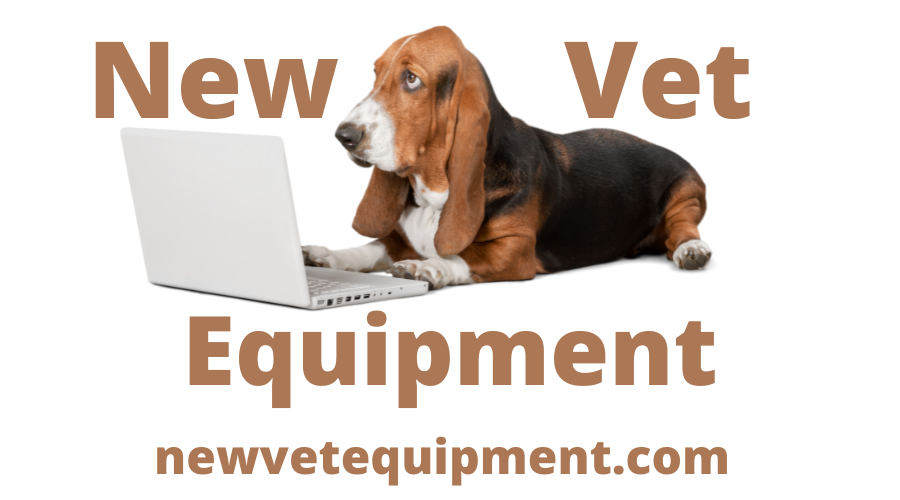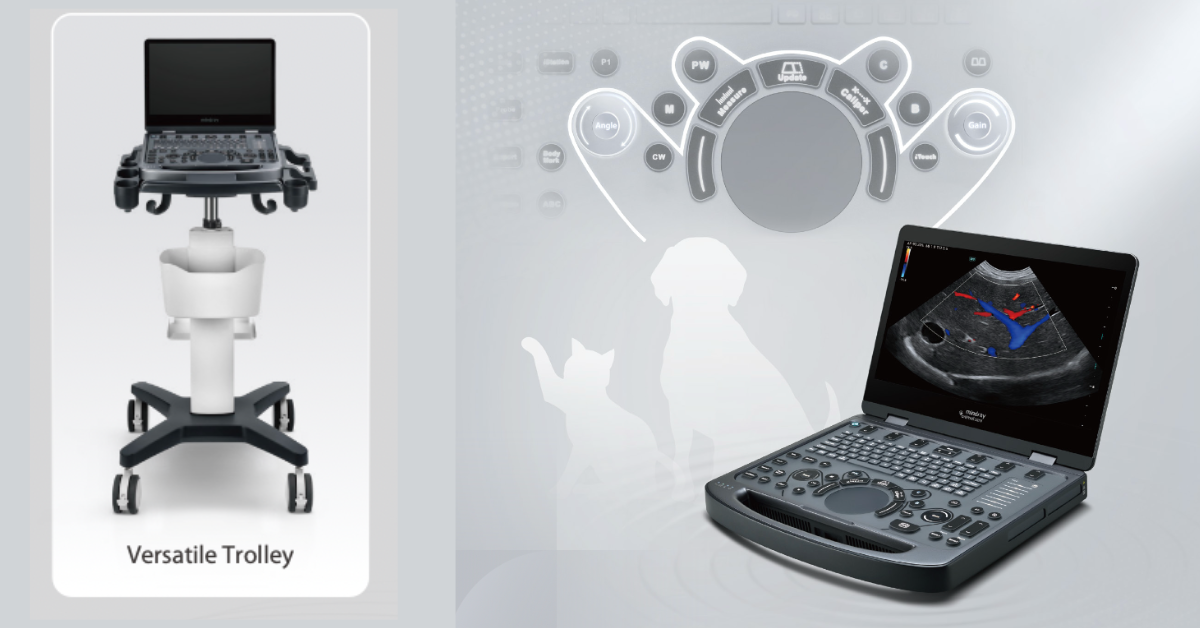A 2025 Veterinary Ultrasound Buyer’s Guide
Choosing the Right Veterinary Ultrasound in 2025
For veterinary practices in 2025, investing in the right ultrasound system is more than just buying a machine — it’s about choosing a tool that fits your patients, workflow, and budget.
Below is your guide to making smart, confident decisions when selecting the best ultrasound for your hospital.
1. Key Factors When Purchasing a Veterinary Ultrasound
Imaging Performance and Probes
The types of patients you serve — small animals, equine, or exotics — will determine your probe requirements. Look for technologies such as Doppler flow imaging, speckle reduction, and image clarity enhancements, and make sure probe switching is simple and efficient.
Workflow Integration and Veterinary-Specific Features
Ease of use is crucial, especially in a busy practice. Look for intuitive controls, veterinary presets, reporting tools, and connectivity to PACS or practice management software. If your practice includes mobile or fieldwork, portability should be a top priority.
Service, Warranty, and Support
The best technology is only as strong as the support behind it. Check for service plan options, local support, parts availability, and software upgrade pathways to ensure long-term reliability.
Cost and ROI
Purchase price is just the beginning. Include maintenance, training, probes, and consumables when evaluating cost. Estimate how many scans you’ll perform weekly or monthly, and your revenue per scan, to calculate your break-even point and expected ROI.
2. Value-Focused Option for Small or General Animal Practices
For practices seeking high capability without a premium price, the Mindray Vetus E5 is an excellent choice — priced at $17,995.
Key Features
- Touch-sensitive gain adjustment for fingertip precision
- Intuitive control panel designed for veterinary use
- Advanced imaging: one-click optimization (iTouch), speckle-reduction (iClear), HR Flow, natural-touch elastography, and contrast imaging
- Lightweight and portable for in-clinic or mobile use
Why It Matters
At around $18,000, it offers strong value and a fast ROI. Its versatility across small and mixed animal applications — abdominal, soft tissue, cardiac, and reproductive — makes it a solid all-around investment for general practices.
3. Specialized Option for Equine and Large-Animal Practices
For equine or mixed-animal veterinarians, the Mindray Vetus EQ is a purpose-built system that delivers premium performance and portability.
Key Features
- Includes two transducers from options such as C5-1s convex, L13-3Ns linear, P4-2s phased array, or 6LE5Vs probes
- Extremely portable: weighs only 6.5 lbs and just 1.73″ thick
- 15.6″ LED monitor plus 12.3″ anti-glare touchscreen for barn or field use
- Preloaded equine presets: musculoskeletal, cardiac, abdomen, and reproduction
- Powered by ZST+ Zone Imaging technology for excellent image clarity and penetration
Why It Matters
Large animals require deeper imaging, a wider field of view, and durable equipment that performs well in challenging environments. The Vetus EQ is designed for these conditions — offering the portability, clarity, and ruggedness needed for on-farm or mobile work.
4. Key Questions to Ask Your Equipment Distributor
- What is included in the base price (probes, software, warranty)?
- What upgrade options are available (additional probes, software modules, reporting tools)?
- What service and support plans are offered (onsite vs. remote, response time, preventive maintenance)?
- How is training handled for your team?
- What are the consumable costs, warranty terms, and what happens if a probe fails?
- How compatible is the system with your current digital workflow (DICOM, PACS, practice management software)?
- What ROI timeline can you expect based on your case volume and patient mix?
5. Smart Decisions Made Easy
Ultrasound remains one of the most versatile and profitable diagnostic tools in veterinary medicine. Choosing the right system helps you improve patient care, expand diagnostic capabilities, and grow revenue.
Partner with a trusted distributor who provides not only the hardware, but also training, support, and integration guidance. That’s how your new ultrasound becomes more than just another machine — it becomes a vital tool for better diagnostics and sustainable practice growth.
How to Choose the Best Veterinary Ultrasound System
Investing in an ultrasound machine is a big decision for any veterinary practice, impacting diagnostic capabilities and patient care.
Choosing the right ultrasound requires careful consideration, Whether you focus on companion animals, large animals, or a combination.
Why Invest in a Veterinary Ultrasound System?
Veterinary ultrasounds offer advanced imaging capabilities for both routine diagnostics and complex cases. There’s a range of reasons why they’re ideal:
Non-invasive: often reducing the need for exploratory surgery in many cases
Real-time imaging: allows for immediate evaluation of organs
Guided procedures: enable precise guidance for fine-needle aspirates and biopsies.
These invaluable tools help diagnose various diseases and abnormalities in veterinary patients. Most commonly:
Abdominal disorders: detecting changes in liver, spleen, and kidney size and the presence of masses or cysts - helping to diagnose hepatitis, liver tumors, bladder stones, and renal cysts.
Cardiac Conditions: evaluating congenital heart defects, cardiomyopathy, and fluid accumulation around the heart.
Reproductive health: early detection of pregnancy, uterine abnormalities, and ovarian conditions.
Fluid accumulation: identify abnormal fluid buildup causing pleural effusion.
Oncology: detection of benign and malignant masses and lymph node enlargement
Let’s move on to unpack some key factors to consider when upgrading or adding an ultrasound to your diagnostic portfolio.
1. Image Quality
First and foremost, high-resolution imaging is essential for accurate diagnoses. Look for systems that offer advanced imaging technologies that provide clear images for superficial and deep tissue examinations.
For instance, the Vetus 9 Ultrasound System by Mindray utilizes ZONE Sonography Technology+ (ZST+), delivering exceptional image clarity across various applications.
Avoid older systems that offer beam-forming technology. You’ll often find this compromises the quality of the image and can decrease your confidence in an accurate diagnosis.
2. Versatility and Application Range
Your ultrasound machine should accommodate the diverse needs of your practice, from small companion animals to large livestock.
Look for ultrasound systems that are designed with this versatility in mind, offering specialized transducers and settings suitable for a wide range of species and medical scenarios.
3. Ease of Use
Technology should enhance your practice’s ways of working, not contribute to bottlenecks.
An intuitive interface and user-friendly controls can impact an efficient workflow, especially in busy practices. Be sure the prospective system is easy to navigate through imaging options and patient data.
4. Portability and Ergonomics
Depending on your practice's needs, portability may be a significant factor. Look for systems that are relatively light weight and provide a slim design.
Ultrasounds like the Vetus 9 have an added bonus: the ability to fold to a height of one meter making it convenient for mobile services and easy storage, without compromising on performance.
5. Advanced Diagnostic Features
Consider those that offer advanced diagnostic tools such as elastography, doppler imaging, and specialized cardiac assessment capabilities.
Doppler ultrasound systems are particularly useful in evaluating blood flow patterns and detecting abnormal heart function.
6. Support and Training
Comprehensive training and reliable technical support will maximize your investment.
Be sure your ultrasound provider offers extensive training sessions, ensuring your team can fully leverage the system's capabilities.
7. Budget and Return on Investment
While high-end ultrasound systems represent a significant investment, their advanced features can lead to improved diagnostic accuracy and increased revenue through enhanced service offerings.
Selecting the right one can feel overwhelming, but this checklist should give you a good place to start in choosing the one that’s best for you and your team!
Top Features of the Mindray Vetus 9 for Veterinarians
Transforming Veterinary Diagnostics with the Mindray Vetus 9 Ultrasound System
In the growing field of veterinary medicine, staying at the forefront of diagnostic technology is key to providing exceptional care to patients.
Adding or upgrading to an advanced ultrasound system not only benefits your practice, but your staff, and your patients.
More notably, it’s a way to uphold our ongoing promise to our clients and community to provide the best possible patient care.
The Mindray Vetus 9 Ultrasound System is a transformative tool that can significantly enhance your practice's in-house diagnostic capabilities. It delivers advanced imaging and user-friendly features, positioning it as a leader in the market.
Let’s take a moment to unpack some features that make this a dynamic and innovative diagnostic resource.
Unparalleled Imaging Quality
Many veterinary ultrasound systems on the market still rely on older beam-forming technologies, which may compromise clarity and consistency, especially in deeper or more complex imaging.
The Vetus 9 is powered by the innovative ZONE Sonography Technology+ (ZST+), which shifts from traditional beamforming to advanced channel-based processing.
This evolution enables real-time imaging with remarkable clarity, ensuring that superficial and deep anatomical structures are displayed precisely.
Features like Zone Imaging and Dynamic Pixel Focusing maintain consistent focus across the entire field of view, helping to enhance our confidence in discoveries and diagnoses.
Versatility Across Veterinary Specialties
While other systems might excel in specific niches, the Vetus 9 provides a well-rounded solution that caters to needs ranging from routine diagnostics to specialized cases.
Designed to meet the needs of veterinary practices, the Vetus 9 ultrasound offers specialized solutions for both abdominal and cardiac assessments. Let’s look a little closer:
Abdominal Imaging: Enhanced Contrast Imaging (UWN+) utilizes second harmonic and non-linear fundamental signals. This means you can expect improved sensitivity to subtle lesions and discrete abnormalities.
Cardiac Imaging: The Tissue Doppler Imaging Quantitative Analysis (TDI QA) feature allows for detailed myocardial movement and synchronization assessment. This feature offers insights into cardiac functions crucial for diagnosing and managing cardiovascular conditions in veterinary patients.
While some systems may include elastography (an ultrasound technique used to measure elasticity or stiffness of tissue) or Doppler imaging, they often lack the same level of veterinary-specific customization found in the Vetus 9.
Its Sound Touch Elastography (STE) provides real-time analysis of tissue stiffness, helping to evaluate conditions like tumors or liver fibrosis.
Enhanced Workflow and User Experience
The Vetus 9 is designed with user-friendly features that streamline workflow, including:
Advanced Display: A 23.8-inch full-screen display provides crisp, large images, while a 15.6-inch full-HD touch screen offers intuitive interaction, making it easier to navigate through imaging options and patient data.
Portability: Many high-end ultrasound systems are bulky, limiting mobility and convenience. This system's compact design, folding down to a height of just one meter, makes for easy transport for mobile veterinary services. Its slim 55 cm body width allows smooth navigation through doorways and clinical settings.
Other systems may offer smaller displays or lack the combination of a high-definition touchscreen and a large viewing screen, which can affect the overall ease of evaluation.
Comprehensive Support and Training
Investing in the Vetus 9 comes with the assurance of comprehensive support in the form of:
Training: Your team will receive 16 one-hour remote training sessions, allowing time for practice and questions and ensuring proficiency in using the system's full capabilities.
Warranty: A five-year warranty provides peace of mind, reflecting the system's quality and a commitment to customer satisfaction.
Elevate Your Practice
Incorporating the Mindray Vetus 9 Ultrasound System into your practice enhances diagnostic accuracy and elevates the standard of care you provide to your patients.
Its advanced imaging capabilities, versatility across specialties, and user-friendly design make it a valuable addition to any veterinary practice committed to upholding its promise of exceptional patient care.
For more information or to learn more about how the Vetus 9 can meet your practice's specific needs, check out the Mindray Vetus 9 Ultrasound System page on our website.








